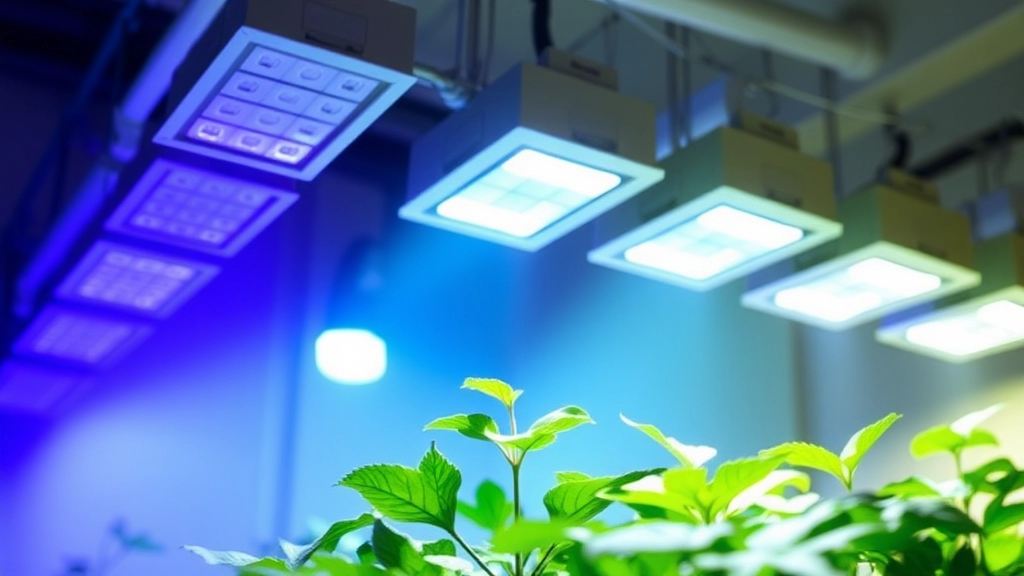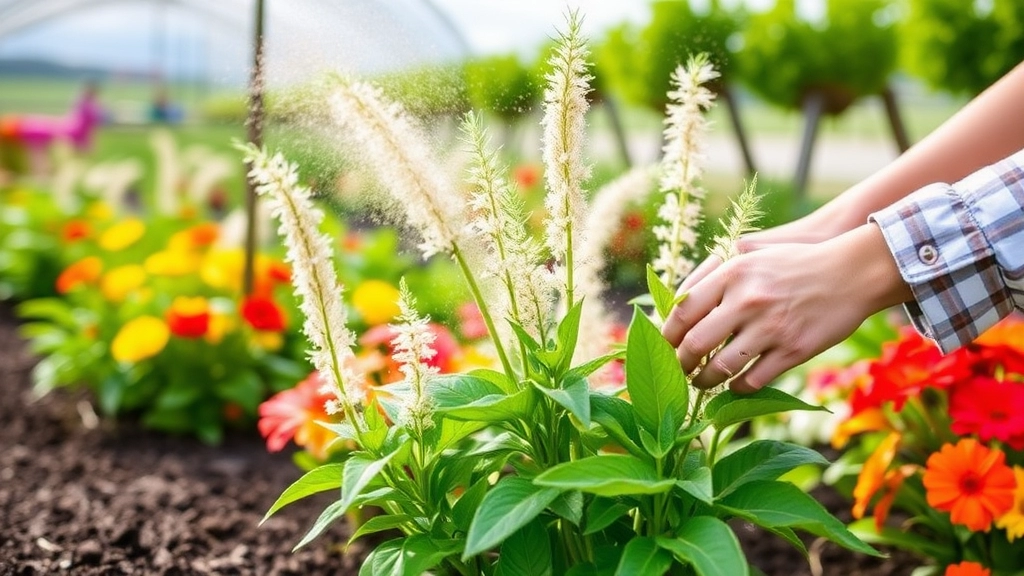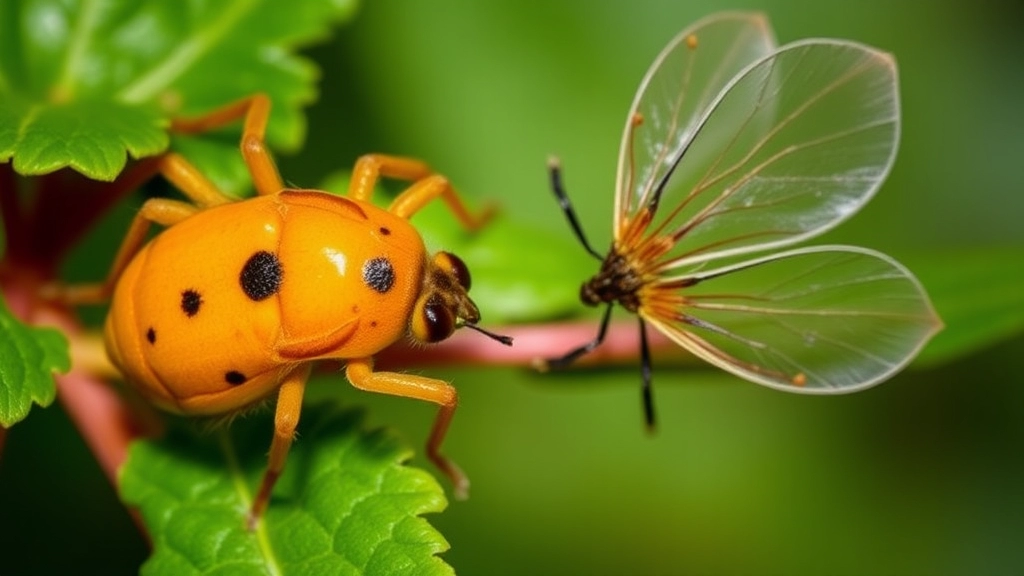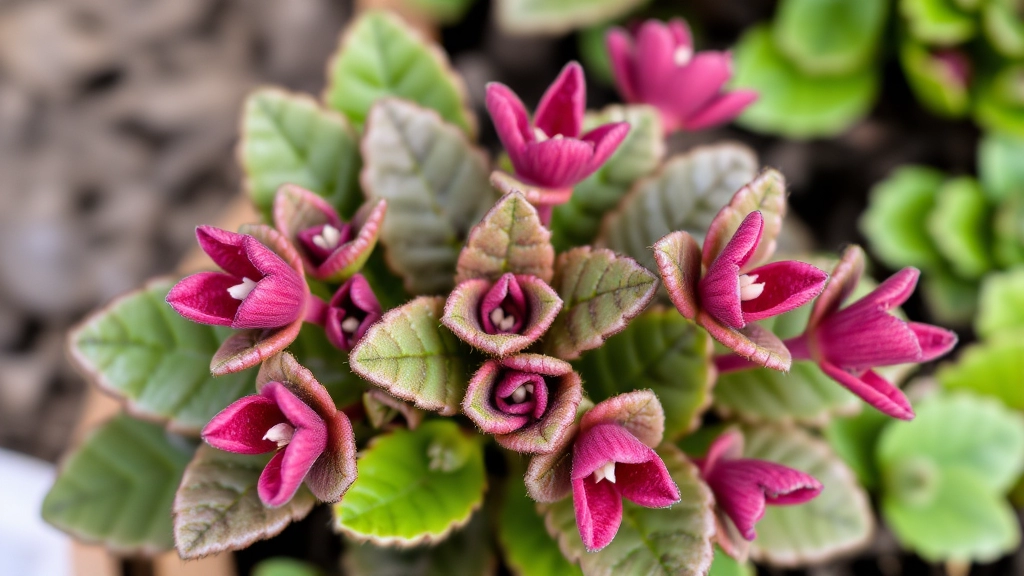Kalanchoe Tomentosa ‘Chocolate Soldier’
If you’re looking to add a unique succulent to your collection, the Kalanchoe Tomentosa ‘Chocolate Soldier’ is a fantastic choice. This plant stands out with its fuzzy, chocolate-tipped leaves and easy-care nature. Let’s dive into what makes this plant special and how you can keep it thriving.
Care Requirements
First off, the Kalanchoe Tomentosa ‘Chocolate Soldier’ loves bright, indirect light. Too much direct sunlight can scorch its leaves, so finding the right balance is key. When it comes to soil, a well-draining mix is essential to prevent root rot. Make sure to let the soil dry out completely between waterings to mimic its natural arid environment.
Characteristics of Kalanchoe Tomentosa ‘Chocolate Soldier’
Are you curious about what makes Kalanchoe Tomentosa ‘Chocolate Soldier’ a standout choice for plant enthusiasts? This charming succulent, often known as the “Panda Plant,” is characterised by its striking foliage and unique texture.
Ideal Light Conditions for Healthy Growth

So, you’ve got a Kalanchoe Tomentosa ‘Chocolate Soldier’ and you’re wondering what kind of light it needs to thrive, right?
These beauties are like sunbathers at the beach—they love bright, indirect sunlight.
Key Light Requirements:
- Bright Indirect Light: Place your plant near a window where it can soak up the sun without getting scorched.
- Avoid Direct Sunlight: Too much direct sun can lead to leaf burn. Think of it as a sunburn for your plant!
- Supplement with Grow Lights: If natural light is scarce, consider using grow lights. They can work wonders, especially during the darker months.
- Rotate Regularly: Give your plant a little twist every few weeks. This helps it grow evenly and prevents it from leaning towards the light.
Signs of Happy vs. Unhappy Plants:
- Happy Plant: Plump, vibrant leaves that are a rich, greenish-brown.
- Unhappy Plant: Stretching stems and pale leaves? Time to adjust the light conditions!
When it comes to growing Kalanchoe Tomentosa ‘Chocolate Soldier’, the right soil mix can make all the difference. Are you struggling to find a potting mix that supports healthy growth? You’re not alone. Many plant enthusiasts face this challenge.
### Optimal Soil Composition
Kalanchoe Tomentosa thrives in well-draining soil that mimics its natural habitat. Here’s what to consider:
– **Cactus Mix**: A commercial cactus or succulent mix is ideal. It ensures proper drainage while retaining some moisture.
– **DIY Mix**: If you prefer a homemade option, combine:
– 50% potting soil
– 25% perlite
– 25% coarse sand
This blend promotes aeration and prevents root rot, a common issue with overly moist soils. For a more detailed guide, you can check out the [complete guide to Kalanchoe Tomentosa care](https://planthq.org/how-to-care-for-kalanchoe-tomentosa-complete-guide/).
### Container Considerations
Choosing the right pot is equally essential. Here are some tips:
– **Drainage Holes**: Always opt for pots with drainage holes to allow excess water to escape.
– **Size**: A pot that is slightly larger than the root ball is perfect. Too large a pot can lead to overwatering.
### Soil pH Level
Kalanchoe Tomentosa prefers slightly acidic to neutral soil, ideally around a pH of 6.0 to 7.0. You can easily test the pH using a simple soil testing kit. For more information on how to grow and care for this plant, visit our [Kalanchoe Tomentosa varieties and care tips](https://planthq.org/types-of-kalanchoe-tomentosa-varieties-and-care-tips/).
IV. Watering Requirements and Common Mistakes to Avoid
When it comes to caring for your Kalanchoe Tomentosa ‘Chocolate Soldier’, understanding its watering needs is crucial. Overwatering or underwatering can lead to serious issues, so let’s dive into how to get it just right.
Ideal Watering Practices
- Frequency: Water your plant every 2-3 weeks during the growing season (spring and summer). In winter, reduce this to once a month.
- Soil Check: Always check the top inch of soil. If it feels dry, it’s time to water. If it’s still moist, wait a few more days.
- Watering Method: Use room temperature water and water thoroughly until it drains from the bottom of the pot. This ensures the roots receive adequate moisture.
Common Mistakes to Avoid
- Overwatering: This is the most common mistake. Kalanchoe prefers to be on the drier side. Signs of overwatering include yellowing leaves and root rot.
- Underwatering: While they can tolerate drought, prolonged underwatering can lead to shriveled leaves.
- Water Quality: Always use clean, non-chlorinated water. Tap water can sometimes contain chemicals that may harm your plant.
Quick Tips
- Use a pot with drainage holes to prevent water from accumulating at the bottom.
- Adjust your watering schedule based on the season and humidity levels in your home.
When caring for your Kalanchoe Tomentosa ‘Chocolate Soldier’, understanding its temperature and humidity preferences is essential for promoting healthy growth.
### Ideal Temperature Range
Kalanchoe Tomentosa thrives in a warm environment. Here are the key temperature considerations:
– **Daytime Temperatures**: Aim for a range of 20-25°C (68-77°F). This is the sweet spot for optimal growth.
– **Nighttime Temperatures**: A slight drop to around 15-18°C (59-65°F) is acceptable. Avoid extreme fluctuations.
– **Cold Sensitivity**: Protect your plant from temperatures below 10°C (50°F). Prolonged exposure can lead to stress or even death.
### Humidity Preferences
Kalanchoe Tomentosa prefers a dry atmosphere. Here’s how to manage humidity levels:
– **Low Humidity**: This succulent thrives in low humidity environments, typically around 30-50%.
– **Avoid Excess Moisture**: High humidity can lead to root rot and fungal issues. Ensure good air circulation around the plant.
– **Indoor Considerations**: If you live in a naturally humid area, consider using a dehumidifier or placing the plant in a well-ventilated room.
### Practical Tips for Temperature and Humidity Management
– **Location**: Place your plant near a south or west-facing window for optimal light and warmth.
– **Avoid Drafts**: Keep your Kalanchoe away from cold drafts or heating vents to maintain a stable environment.
– **Monitor Conditions**: Use a thermometer and hygrometer to keep an eye on the temperature and humidity levels.
For more detailed information on caring for Kalanchoe Tomentosa, you can check out the [Kalanchoe Tomentosa Propagation Guide](https://planthq.org/kalanchoe-tomentosa-propagation-guide-stepbystep-tips/) and learn about the [Types of Kalanchoe Tomentosa](https://planthq.org/types-of-kalanchoe-tomentosa-varieties-and-care-tips/).
Fertilizing Tips for Optimal Plant Health

So, you’ve got your Kalanchoe Tomentosa ‘Chocolate Soldier’ thriving, but are you giving it the nutrients it needs?
Fertilizing can be a bit of a minefield, but don’t worry, I’m here to help you navigate it.
When to Fertilize:
- Growing Season: The best time to fertilize is during spring and summer when your plant is actively growing.
- Frequency: Once a month should do the trick, but listen to your plant. If it looks a bit lackluster, you might need to step it up.
What to Use:
- Balanced Fertilizer: A diluted, balanced liquid fertilizer (like a 10-10-10) works wonders.
- Succulent-Specific: You can also opt for a fertilizer specifically designed for succulents. It’s formulated to give them just what they need without overdoing it.
How to Apply:
- Dilution: Always dilute your fertilizer to half-strength. Kalanchoe doesn’t need a full-on feast.
- Watering In: Apply it when the soil is damp. This helps prevent root burn and makes sure the nutrients get absorbed.
Common Mistakes to Avoid:
- Over-Fertilizing: Too much fertilizer can lead to leggy growth and even root damage. Less is more!
- Fertilizing During Dormancy: Don’t fertilize in the fall and winter when your plant is resting. It’s like trying to wake someone up when they’re in deep sleep—just not cool.
If you’re considering expanding your collection of Kalanchoe Tomentosa ‘Chocolate Soldier’, you’re not alone. Propagation is a rewarding and straightforward process that can lead to thriving new plants.
Propagation Methods
– **Leaf Cuttings:**
– Choose healthy, plump leaves.
– Use a clean, sharp knife to cut the leaf at the base.
– Allow the cut end to dry for a few hours to form a callus.
– Place the leaf on well-draining soil, ensuring the cut end is in contact with the soil.
– Mist lightly and cover with a plastic bag to maintain humidity.
– **Offsets:**
– Look for small offsets or pups growing at the base of the parent plant.
– Gently separate the offset from the main plant, ensuring it has roots.
– Plant it in its own pot with a suitable potting mix.
Success Tips
– **Timing:** Spring is the best time to propagate as the plant is actively growing.
– **Light:** Provide bright, indirect light to encourage growth.
– **Watering:** Keep the soil slightly moist but not soggy. Overwatering can lead to rot.
– **Patience:** New roots may take a few weeks to develop, so be patient and resist the urge to disturb the cuttings.
For more detailed guidance, check out this [complete guide to Kalanchoe Tomentosa propagation](https://planthq.org/kalanchoe-tomentosa-propagation-guide-stepbystep-tips/). Additionally, if you’re interested in other varieties, you might find this [guide on types of Kalanchoe Tomentosa](https://planthq.org/types-of-kalanchoe-tomentosa-varieties-and-care-tips/) quite helpful.
Common Pests and Diseases: Prevention and Treatment

So, you’ve got your Kalanchoe Tomentosa ‘Chocolate Soldier’ thriving, but what happens when those pesky pests or sneaky diseases come knocking?
First off, it’s important to keep an eye out for the usual suspects:
- Mealybugs: These little white fluff balls love to hide in the crevices of your plant. They suck the sap and can cause yellowing leaves.
- Spider Mites: Tiny and often invisible, these guys can create webbing on your plant. If you notice stippling on leaves, it’s time to act.
- Aphids: They’re small, greenish, and multiply quickly. They can distort new growth and leave a sticky residue.
Prevention Tips
Preventing pests is way easier than dealing with them later. Here’s how to keep your Kalanchoe in tip-top shape:
- Regular Checks: Inspect your plant weekly. Catching issues early can save you a lot of hassle.
- Clean Leaves: Wipe down leaves with a damp cloth to remove dust and deter pests.
- Good Airflow: Ensure your plant isn’t overcrowded. Good airflow helps prevent infestations.
- Neem Oil: This natural pesticide can deter many pests. Just mix it with water and spray it on your plant.
Treatment Options
If you do spot pests, don’t panic. Here’s how to tackle them:
- Isolate: Move the affected plant away from others to prevent spreading.
- Insecticidal Soap: Spray it directly on the pests. It suffocates them without harming your plant.
- Rinse: For mealybugs and spider mites, a strong spray of water can dislodge them.
- Pruning: If a leaf is heavily infested, don’t hesitate to prune it away.
Common Diseases
Now, let’s chat about diseases. Your Kalanchoe can suffer from a few common ailments:
- Root Rot: Overwatering is the main culprit here. Ensure your pot has drainage holes and let the soil dry out between watering.
- Leaf Spot: This is often caused by fungal infections. If you see spots, remove the affected leaves and improve airflow.
Best Practices for Repotting and Root Care
Are you concerned about your Kalanchoe Tomentosa ‘Chocolate Soldier’ becoming root-bound or outgrowing its pot? Repotting is essential for maintaining a healthy plant, and understanding the right techniques can make all the difference.
FAQs about Kalanchoe Tomentosa ‘Chocolate Soldier’
What are the ideal light conditions for Kalanchoe Tomentosa ‘Chocolate Soldier’?
Kalanchoe Tomentosa ‘Chocolate Soldier’ thrives in bright, indirect sunlight. Placing it near a window where it can receive ample light without direct exposure is perfect. Avoid direct sunlight as it can cause leaf burn.
How often should I water my Kalanchoe Tomentosa ‘Chocolate Soldier’?
During the growing season (spring and summer), water every 2-3 weeks. In winter, reduce watering to once a month. Always check the top inch of soil before watering; if it’s dry, it’s time to water.
What kind of fertilizer should I use for my Kalanchoe Tomentosa ‘Chocolate Soldier’?
A diluted, balanced liquid fertilizer (like a 10-10-10) works well. You can also use a fertilizer specifically designed for succulents. Fertilize once a month during the growing season (spring and summer).
How can I prevent pests on my Kalanchoe Tomentosa ‘Chocolate Soldier’?
Regularly inspect your plant, clean the leaves with a damp cloth, ensure good airflow, and consider using neem oil as a natural pesticide. These practices can help prevent common pests like mealybugs, spider mites, and aphids.
What should I do if my Kalanchoe Tomentosa ‘Chocolate Soldier’ gets pests?
Isolate the affected plant to prevent spreading. Use insecticidal soap, rinse with a strong spray of water, or prune heavily infested leaves. These methods can help control pests effectively.
What are common signs of overwatering and underwatering?
Overwatering can lead to yellowing leaves and root rot, while underwatering may cause shriveled leaves. It’s important to let the soil dry out between waterings and use a pot with drainage holes.
When should I fertilize my Kalanchoe Tomentosa ‘Chocolate Soldier’?
Fertilize during the growing season (spring and summer) once a month. Avoid fertilizing in the fall and winter when the plant is dormant.
What are common diseases that affect Kalanchoe Tomentosa ‘Chocolate Soldier’?
Root rot, often caused by overwatering, and leaf spot, usually due to fungal infections, are common diseases. Ensure proper watering practices and good airflow to prevent these issues.
How do I know if my Kalanchoe Tomentosa ‘Chocolate Soldier’ is happy?
A happy plant will have plump, vibrant leaves that are a rich, greenish-brown. If you notice stretching stems and pale leaves, it may be time to adjust the light conditions.
References
-
Kalanchoe Tomentosa ‘Chocolate Soldier’ Plant Profile – The Spruce
-
Kalanchoe Light Requirements – Gardening Know How
-
Kalanchoe: How to Grow and Care for Kalanchoe Plants – The Old Farmer’s Almanac
